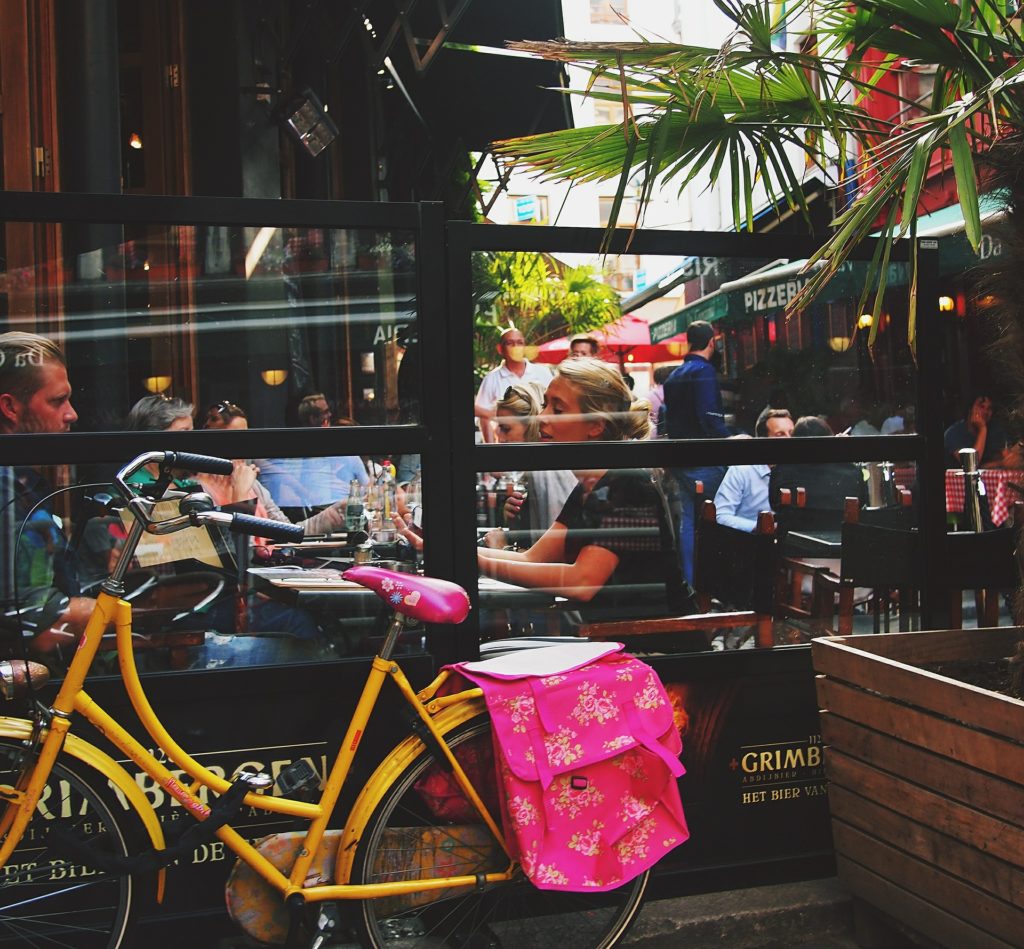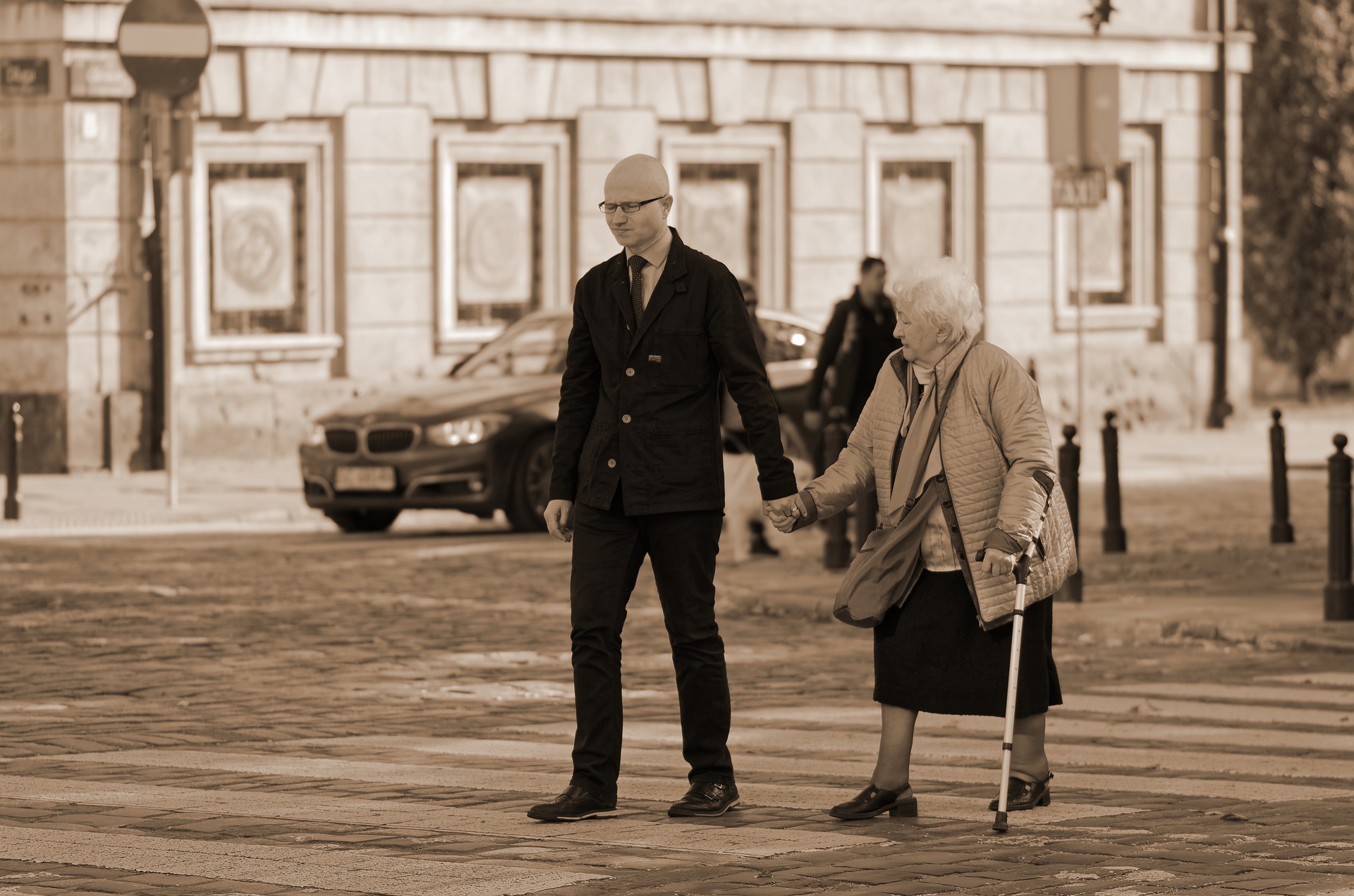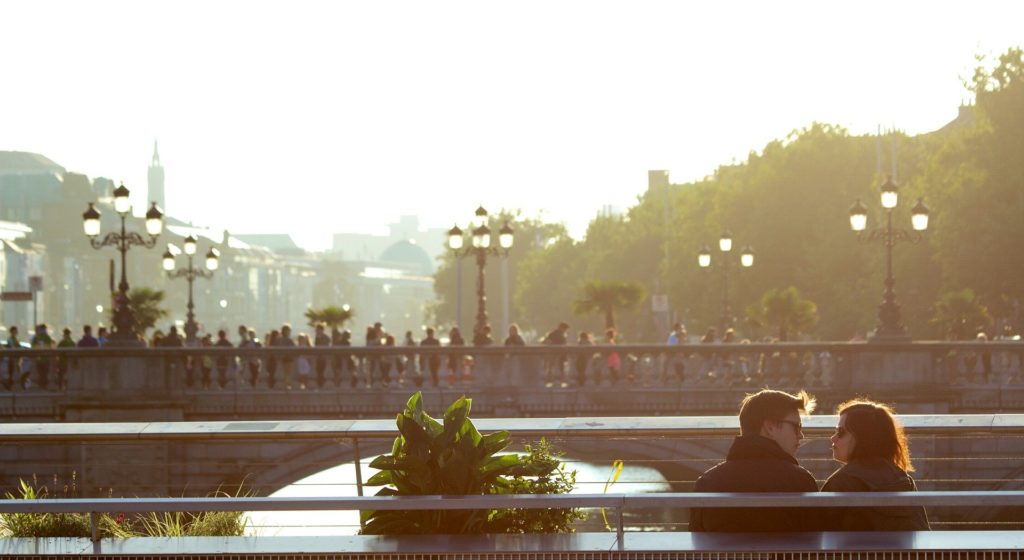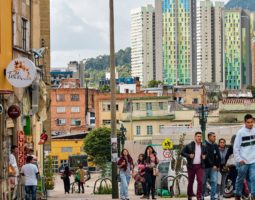Why do the residents of one city feel happy while of another one do not? What factors contribute to a social group’s feeling of belonging, safety and comfort? It there a recipe or a solution that can transform a smart city into a happy city for all generations alike?
Well-being – the keyword
The expression ‘well-being’ is being heard more and more often in connection with many aspects of our daily lives: the workplace, buildings, city space, and even interpersonal relations. This is no coincidence, because well-being does not merely encompass balance but also the feeling of happiness, the so called satisfaction with what we do and where we are. When analysed against the backdrop of cities and their inhabitants, which is also stressed by Charles Montgomery, author of „Happy City”, it turns out that well-being is about trust, feeling safe and supported, not being lonely or alienated from society. It is these component parts together (not money!) that build high-quality social relations – the so called social wealth.
In their 2002 research, psychologists Ed Diener and Martin Seligman discovered that it is not gender or social and economic status that impacts our perception of being either more or less happy in the place we live in but the ties with family and friends, and their support. Similar research was later repeated in Iran and Jordan and its results brought out the same regularity: strong connectedness translates not only into subjective perception of life satisfaction but also makes people with rich social connections actually healthier – they tend to live on average 15 years longer than persons who are socially isolated, e.g. the disabled, the elderly, poor and homeless. This is frequently a reflection of the unsuitability of city space for their needs, absence or poor social integration schemes, problems moving around the city or insufficient legal and financial solutions.
Social isolation, according to Holt-Lunstad’s research conducted in 2017, poses even a greater risk of death than the commonly known risk factors, such as smoking, excessive alcohol consumption, obesity and lack of exercise!

It is worth underscoring that the power of social confidence goes beyond the relations with family and close friends. Even casual and superficial encounters with strangers raise people’s spirits in the same way as the time spent with pals. By these I mean making eye contact with a passer-by, saying hello to a neighbour, a friendly chat with the local butcher or exchanging cordialities with the barista at the local café. Research demonstrates that this seemingly meaningless type of interaction strongly correlates with economic growth, creativity and happiness.
Wisely planned space
At this point we arrive at this question: can the city impact our social well-being? Can the city support various generations and social groups so that they do not feel excluded? Of course it can! First of all, urban infrastructure needs to be reviewed, but not in terms of its looks but the needs of various resident groups. It might be a good idea to resort to social dialogue and ask the citizens of a city what they miss in the city space.
Sometimes it is a public zone which would welcome whole families to sit in and relax (this is how the Bute-Robson Plaza was launched in Vancouver), sometimes safer roads with traffic-calming measures and more way for pedestrian traffic and cycling (Mexico city), sometimes lower kerb heights to facilitate safe obstacle crossing by the disabled, mothers pushing prams, elderly persons with walking aids, children on bikes, and sometimes arranging city park space in a way that equally accommodates the needs of both sexes (gender mainstreaming in Vienna).
 Bute-Robson Plaza, Vancouver, fot. www.vancourier.com
Bute-Robson Plaza, Vancouver, fot. www.vancourier.com
As one can see – the method of planning the city infrastructure is very important. Research shows that locations like modern galleries, shopping malls, apartment buildings, tower blocks, and closed-off residential complexes are a social desert. Neither residents or tourists want to linger in such places. The ambience of smaller local shops and boutiques, street cafes and bars is so much more inviting, because this is where we feel cosy and more in connection with the surroundings. How do we prove it? Suffice it to compare Happiness Street and Deira in Dubai to see which one truly brims with life and attracts all generations.
The conclusion is obvious: it is not digital technologies like Facebook or other smart applications but the planning of streets, public spaces and apartments with social interaction in mind that can help us all connect again.
City without social inequality
Charles Montgomery, with whom I personally agree, stresses that a smart city is a city that attempts to minimise misery, takes care of our health instead of causing malady, and offers true freedom of living, movement and shaping our existence in the way we deem suitable, divides its space and available services honestly and fairly, builds and fosters inter-generational ties.
Bogotá is a fine example how it needs to be done. Enrique Peñalosa – the mayor of Bogota, is not after all called the “Mayor of Happiness” for nothing. Peñalosa believes that a city can be planned in such a way as to give people dignity and to make them feel rich. This goes to show his great awareness of the city’s acute problem which drove him to find a solution to make the residents happier.
Bogotá – Columbia’s capital city – has one of the highest income inequality indicator values (large differences between the poor and the wealthy). Peñalosa as its mayor chose to promote a sustainable city transport system called TransMilenio, which grew to become the foundation of social justice, and eliminated traffic congestion that used to paralyse the city. Also, Bogotá closes its streets to car traffic on every Sunday between 7 and 14. In effect of Car-Free Sundays, people switched to public transport and cycling, and started going on foot, which had a strong effect on the tightening of inter-generational relations.
Additionally, Peñalosa doubled the rates for parking in the city, introduced car traffic restrictions, redesigned the streets with pedestrians in mind, and created plenty of green spaces for leisure. All these improvements have considerably influenced the quality of life in the city.
Foundations of smart cities’ success
Migrations, depopulation, social and demographic change do not make it easy for the administrators of modern agglomerations because different groups mean different needs, barriers and problems.
Looking at the examples of smart cities from around the globe, such as Oslo, Copenhagen, Vienna, London, Barcelona, Amsterdam, Hong Kong, Toronto or Tokyo, it is evident that these challenges can be taken on. How can they be responded to? It is said that the solutions and technologies implemented in smart cities are meant to improve the life of every citizen. However, the real change begins when the people themselves get transformed, not merely the places they live in. This goes to show that a smart city must stimulate its residents, and must go through the process that Copenhagen, or the said Bogotá, did. The cities analysed their needs and problems in real time, and implemented changes which were followed by changes in the residents’ behaviour, who started to cycle, travel on the city transport system, and use public spaces.

Personally, looking at all the areas of urban life where smart city administration could effectively and usefully stimulate the residents, I have identified three which I believe to be of paramount importance: broadly understood health, high productivity, and multiple personal development opportunities.
As far as health is concerned, cities usually offer broadly understood healthcare services, sports and leisure facilities, green areas, and access to medication. A smart city will additionally stimulate its inhabitants to live healthy lifestyles, for example through a network of cycling paths, city bike and scooter systems, organising educational and sports events, clean air measures, reducing urban noise levels, etc.
The area of productivity is mainly concerned with city transport, urban cards and apps. A large city will offer plentiful connections with the country and the world at large via an airport, bus and train networks and the city transport. But a smart city offers even more! Starting from dynamic traffic solutions – intelligent traffic congestion management schemes – through multifunctional city cards, for all kind of payments, ending on city apps. A smart city will also promote the construction of office buildings in the mixed-use system, i.e. ones that are multifunctional and also contain e.g. a nursery, a laundry, a gym and a shop in addition to offices, and will encourage the use of Park & Ride car parks. It is also a disability-friendly city.

In the personal development area, in addition to a vast educational offer, a smart city will stimulate its graduates to settle down and start a family in the city, offer financial and counselling schemes for start-ups, and encourage businesses to undertake investment and development, create special industrial zones with excellent infrastructure and communication.
Therefore, one must not allow oneself to be swept up in the wave of smart city enthusiasm but remember the key ingredient of every city: its citizens. Let me extend my best wishes to your cities and mine so that their residents and their feeling of well-being are always at the core of all smart solutions.







